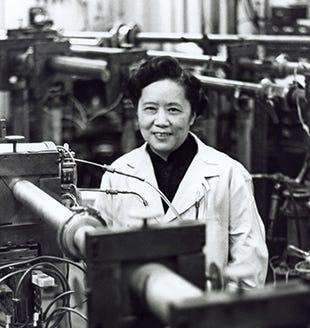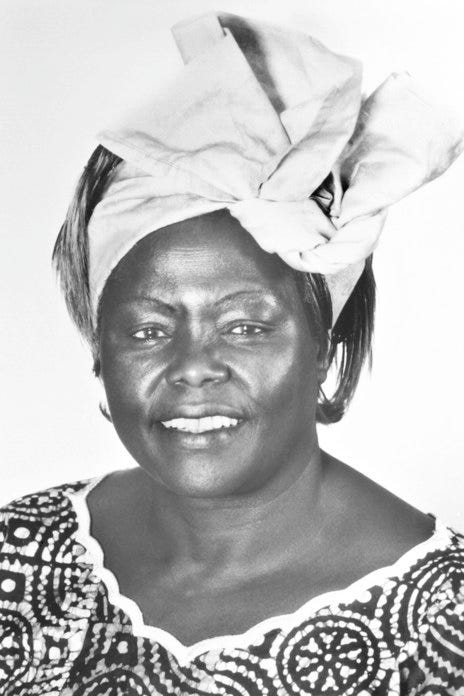Welcome to The Chief Brief.
Every Sunday, I spotlight global, diverse, and innovative female leaders, and the news influencing them to change the world. The Brief curates and breaks down stories from across the globe, and helps you connect with the women making news! It is my first step in a passion project to build a globally connected community of women leaders.
Happy Sunday!
On this last weekend of ‘Women’s History Month’, I’m going to deviate from format, and bring you stories of the most fascinating women I’ve been researching. These ladies opened the doors that we all walk through today. This week’s brief is my small contribution to shine a light on these hidden figures of history. After all, we have the rest of the year to celebrate the leaders of today.
The Chief Brief will be back Easter Sunday in its normal format. Until then, happy reading!
If you enjoy reading the brief, please spread the word!
An Elected First
Sirimavo Bandaranaike, The world’s first female Prime Minister
The matriarch of Sri Lanka’s (then called Ceylon) Bandaranaike political family became the first woman to be elected Prime Minister in the world in 1960. She took on the mantle of leadership from her husband who was made Prime Minister in 1956 but was assassinated in 1959. She left office after 1 term in 1965. But subsequently returned to serve two more terms as PM (1970–77 and 1994–2000).
Sirimavo’s first term was all about following her husband’s socialist economic policies, neutrality in international relations, the active encouragement of the Buddhist religion, and of the Sinhalese language and culture. In her further two terms she pursued more radical policies such as restricting free enterprise, and land reforms. She also promulgated a new constitution that created an executive presidency and made Ceylon into a republic named Sri Lanka. In 1980 she was barred by the Parliament from political office and stripped of her political rights. These were re-instated in 1986. Sirimavo finally resigned as PM in 2000 and died of a heart attack shortly after. Read more here.
Historically Scientific
Chien-Shiung Wu, overlooked for the Nobel but built the atomic bomb
Inspired by Marie Curie, Chien-Shiung Wu was the child of parents who challenged long held Chinese prejudice against educating women. Born in 1912, she quickly leap-frogged through school in China, and enrolled in University. With no graduate programs in Physics available in China in 1934, and exciting career prospects awaiting her in the United States, she immigrated, leaving behind parents she would never see again. Upon her leaving, war began between China and Japan, which subsequently rolled into World War 2.
In 1944, Wu was invited to join the Manhattan project and in 1945 the culmination of her work ended with not just the development of the atomic bomb, but its actual use in Japan. Wu later expressed regret about the use of her work on Hiroshima and Nagasaki.
“Do you think that people are so stupid and self-destructive? No. I have confidence in humankind. I believe we will one day live together peacefully.”
An expert on Beta decay, she later helped two scientists Tsung-Dao Lee and Chen-Ning Yang, investigate a law in physics known as the conservation of parity. She helped them prove their theory, for which they won the Nobel Prize in Physics in 1954. Wu was never named nor acknowledged. She died in 1997. Read more here.
Making Tech
Grace Hopper, the only mathematician to have a warship namesake
‘Queen of Code’ Grace Hopper’s parents instilled in her the belief that she could accomplish just about anything. She joined Vassar college as a mathematics professor and subsequently joined the U.S. Navy reserve during World War 2.
Her list of firsts seem never ending. She was one of the first programmers of the Harvard Mark 1 computer. She also found the first computer ‘bug’ (It was a real moth trapped inside a computer). She helped create the world’s first all-electronic digital computer, invented the program that allows written instructions to be translated to code by computers and co-developed COBOL, one of the earliest standardised computer languages. She was made rear admiral in the U.S. navy in 1985 and was the oldest officer on active U.S. naval duty when she retired in 1986. The U.S. Navy Arleigh Burke-class guided-missile destroyer USS Hopper was named for her, as was the Cray XE6 "Hopper" supercomputer at NERSC. She died in 1992. Read more here.
The Adventurer
Gertrude Bell, The Queen of the Desert
The ‘Queen of the desert’ had Nicole Kidman play her in a Hollywood adaptation of her life. But Gertrude Bell has never become a household name like her contemporary T.E. Lawrence (Lawrence of Arabia). A gifted scholar, pioneering photographer, archaeologist and supporter of the Arab world, she was the only woman working for the British government in the Middle East before and during World War 1.
Gertrude helped shape modern Iraq, as it emerged from the ruins of the Ottoman Empire. As the most powerful woman in the British Empire, she pushed the colonial agenda, arguing in favour of Iraqi self-governance, established its borders, and helped draft the country’s constitution. But she was no feminist. She actively campaigned against giving women the right to vote. She died having overdosed on sleeping pills in Baghdad in 1926. Read more here.
The original eco warrior
Wangari Maathai, Nobel Peace Prize winner
Wangari Maathai was the first African woman to receive the Nobel Peace Prize in 2004. She was also the first female scholar from East and Central Africa to be awarded a doctorate and the first female professor in Kenya.
In 1977, Dr. Maathai began what is now called the ‘Green Belt Movement’ in Africa. It is a grass roots movement to counter de-forestation and empowers communities, particularly women, to conserve the environment and improve livelihoods. It began as a way for women in Kenya to plant trees, and work toward a balanced ecology in their local environments. In Dr. Maathai’s view, reforestation was not just about sustainability. She believed the Green Belt movement was closely linked with democracy, and women’s rights. The movement has since spread across the African continent and resulted in more than 30 million trees being planted. Dr. Maathai died in 2011. Read more here.
Sportswoman
Alice Milliat, founder of Fédération Sportive Féminine Internationale (FSFI)
The 1920’s and 30’s were not kind to women in sports. The International Olympic Committee headed by Pierre de Coubertin (the father of modern-day Olympics) didn’t think the feminine form was built to be sweaty or athletic. Imagine the horror some claimed, if women with their delicate forms were to play track and field or attempt anything more than a swim or tennis.
But Alice Milliat wanted to row, and she wanted to compete in the Olympics. So, she founded a federation for female athletes which held four of their own Women’s Olympics. 1922 in Paris, 1926 in Gothenburg (Sweden), 1930 in Prague and 1934 in London. But despite its roaring success, the federation ended up folding in 1936. Contributing to its demise was politics and pressure, especially from Alice’s nemesis Pierre de Coubertin. But she had succeeded in what she wanted - Women were now accepted as athletes. Olympic Athletes. Alice died in 1957. Read more here.
On March 8, 2021 a sculpture to honour Alice was unveiled at the headquarters of the French National Olympic Committee. Her statue now stands at the entrance to the building, alongside that of Pierre de Coubertin.
Capturing history
Alice Guy-Blaché, Hollywood’s first female director & producer
Before Hollywood was Hollywood, it was a nascent industry based in New Jersey and Alice Guy-Blaché was one of its pioneers. Born in 1873 in France, Alice helped create narrative story telling as we know it. She experimented with colour cinematography, visual effects and synchronised sound. In 1907, after a prolific movie making career in France, she moved to New York with her English cameraman husband. In 1910 she founded her own film studio called ‘Solax Studio.’ Alice put her husband in charge of Solax so she could focus on script writing. In true show-biz fashion, she was stabbed in the back by her spouse. He opened a rival studio and ran off with a young actress.
But none of the drama surrounding her stopped Alice from following her passion. She is credited with making more movies than any man during her time. She wrote, directed or produced more than 1,000 films, and didn’t shy away from tough topics either. She made the first movies about gender roles, labour rights, and even race. In 1912, she made a movie called “A fool and his money,” which is now recognised as one of the first, (if not the first) to feature an all-black cast. She worked with Douglas Fairbanks and Charlie Chaplin. Even Alfred Hitchcock cited her as an influence. But Alice, who died in 1968 still remains largely forgotten in Tinseltown. Read more here.
Must Watch
Maya Angelou’s words never fail to lift my spirit!
If you haven’t watched the first documentary made about the woman who somehow touches each and every one of us at our very core — please watch ‘Still I Rise. The film premiered to critical acclaim at the 2016 Sundance Film Festival. It won the Audience Award at AFI Docs, and was featured at notable festivals worldwide including Full Frame, Sheffield Docs, Boulder Film Fest, and River run, winning 9 awards on 3 continents.
You can catch it on Netflix, Amazon, PBS, iTunes and Google Play.
Here’s a trailer.











